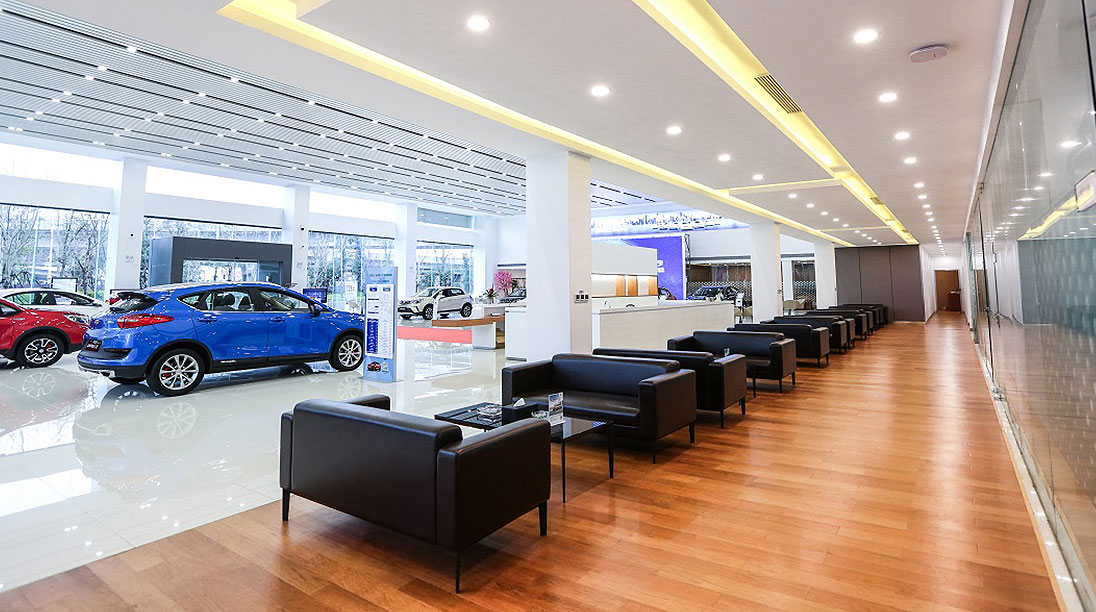Based on experiences in China – where the agency model is thriving – Deloitte’s chief strategy officer for China, Dr Marco Hecker, said the country had many examples of emerging and existing trends that are about to occur in Australia.
Key to the transition was the need for dealers to build new revenue streams.
“You have to be prepared for the effect of CASE trends on your business,” he told guests of the recent online Deloitte Auto Roadshow seminar.
“When we talk about CASE, it is referring to Connected, Autonomous, Shared and Electrified.
“These four trends are not hitting you all at the same time or at the same intensity. For you, it’s really around the opportunities and challenges of CASE.
“Dealers have to prepare themselves for change rather than waiting for something to happen.”
Dr Hecker said there will be an “immediate” focus on electrified vehicle sales and a shift more towards fleet aftersales “is going to be more important”.
“The opportunity that you have around F&I is becoming even more important, when we start thinking about mobility as a service subscription model.
“We’re moving to a kind of reinvented sales model so we need to reach out and be more active on that front.
“You need to be able to master that omni-channel function and we need to really be prepared to move more from stationary to online sales.”
Dr Hecker said that starting in China four years ago, changes in the sales model and customer experience began with the arrival of Tesla and has now spread out to other manufacturers.
“Australia is just getting into this right now,” he said.

Marco Hecker
“In China, we had the benefit of Tesla being there early and was followed by a lot of local players who basically came into the market and now are really shaping up.
“Now they (new Chinese EV manufacturers) are setting the benchmark in terms of customer experience.”
Dr Hecker said there would be some expenses that come with the changes. These include the need to train dealer staff to get them ready.
“There is a shift as the transition occurs from the internal-combustion engine (ICE) vehicles through to hybrids, plug-in hybrids and pure EVs,” he said.
“There is a shift from a full-circle sales in store for your store to more an experience centre. The type of services that you’re providing, and will need to provide in five years from now, is changing.
“But most importantly, this all comes with additional revenue opportunities.
“You’ll see more things like pop-up stores, more combinations with retail including restaurants, and a spread of experience centres.
“It’s not only Rockar in London, you’ll see model stores across Beijing, Shanghai, Guangzhou and even now in some of the tier-two cities in China, where you really bring the car closer to the customers.
“And that’s something which you will see more, including return on sales and cost-cutting initiatives of the OEMs.
Dr Hecker said while Honda and Mercedes-Benz are moving towards the agency model in Australia, this program has been in China for more than a year and the number of OEMs selling this way is increasing.
“More of the established brands are really thinking about this kind of agency model,” he said.
“Some of them are going to direct sales. Others are talking only about enhancing the existing dealership model.
“No matter what it is. There’s one element which is very clear here in the market and I would really recommend for you to take it forward: There is change in the way that we’ve been doing core retail, aftermarket and F&I in the past that is not the same as what it will be in the future.”

Dr Hecker said there were many benefits of the agency model from a dealer perspective.
“Number one, there’s clearly a significant reduction of working capital requirements for your business,” he said.
“There’s only relatively small investments that you need to do which will help you to improve the ROI. And there is no extra cost.
“When you think about the new brands that might, or are, coming into the Australian market, this is something that sounds quite attractive.
“On the other hand, there are a couple of challenges and constraints including the fact that it is a big mindset change for you.
“You are a service provider and need to be reaching out more actively to the customers, sometimes with the help of the OEMs. Sometimes it’s in your own interest to stay much closer to those customers.
“There’s also a decrease in the business scale. As a service provider there’s a high expectation to increase the efficiency of your operations, across all the business, from the initial contact point all the way to the closing aftermarket service reminders.
“You also want customers to buy some of the services going forward, particularly the digital services where there’s a big opportunity.
“In the Deloitte consumer survey, it showed that post-COVID, a majority of consumers want to go back to public transport and back into car hailing and ride sharing.
“So there’s a huge opportunity there around mobility as a service. And when we talk about mobility as a service, the manufacturers as well as some of the service providers are not yet mastering that kind of service and following that business model.
“So it’s really important for you as a dealer to really think about what are the assets; what are the differentiators and the strong points that only you, and nobody else, have?”

Dr Hecker said there are three:
- You are the owner of the customer contact list and you have the data, from the CRM system, to have an end-to-end experience. Think about how you can use that kind of data in order to keep a lost customer. Keep in touch, come back with those customers using that kind of mobility fleet in terms of triggering initial interest and getting initial leads.
- It’s your physical location network that you’ve invested in over and over. So it’s about getting the return on assets in your physical locations. Think about your building and aftersales and how you can set up the garage to use for things like storage for exchange cars or for charging EVs. There’s a whole business model around the uptake and upkeep of those fleets based around your knowhow and your capabilities, and your trusted workshops.
- Most customers in Australia still appreciate a direct face-to-face interaction. They appreciate that relationship that they have with you as a leader. It’s really important that those established processes remain. Customers are looking for a solid partner to help them both as a fleet operator and as a mobility provider. And you can charge for those.
Some of the opportunities are in ride hailing, car sharing and new-car rental. If you look at some of the business cases of (Chinese ride hail) Uber or Didi you can see that they don’t make money unless the vehicle is running. So there are a lot of operational elements that are driving profitability.
Whether it’s Volvo, whether it’s from Audi and others, which is really important for you to see if this is happening right now, it’s also coming to Australia.
Dr Hecker said dealers must not “sit and wait”.
“There are huge programmes across the world to optimise return on sales,” he said.
“It’s important for you to anticipate and take an active stance. What are the assets that only you have? It’s your customer access and data. It’s also the physical network.
“You need to build those capabilities to really provide a truly seamless digital customer experience.
“It’s important how you create a team, that physical connectivity, to make sure that consumers are coming to your dealership and that you’re reaching out in the way that they want to be reached out to.
“Think about what your customers want; how would they want to reach out; and how do they want to buy the motorcar?
“Last but not least, there are OEM specific strategies in place. Not all of them are cast in stone.
“If you are able and willing to go an extra mile to become a pilot in the market, I think they’re good opportunities for you to be prepared.
“And there’s really no reason to be scared. The market is pointing in the right direction. You have to ask what it takes to master the future.”

By Neil Dowling












 Read More: Related articles
Read More: Related articles

